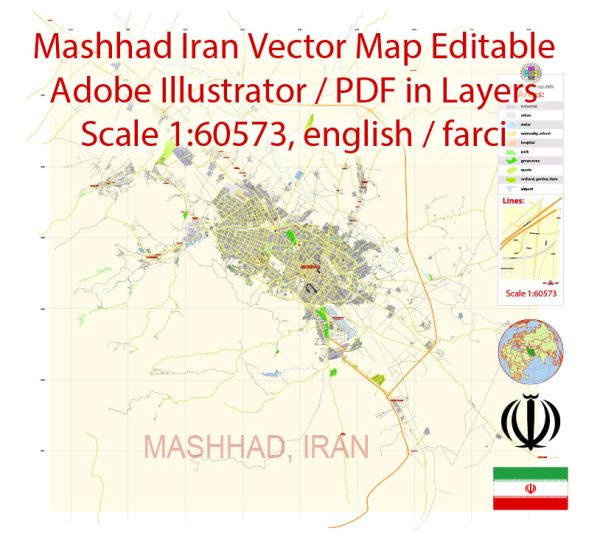Mashhad, located in northeastern Iran, is the second-largest city in the country and the capital of Razavi Khorasan Province. The city holds great historical and cultural significance, primarily due to the presence of the Imam Reza Shrine, the largest mosque in the world by dimension. The history of Mashhad’s urban development is rich and diverse, reflecting the city’s evolution through different periods.
- Ancient Roots: Mashhad’s history dates back to ancient times when it was a small village known as Sanabad. However, it gained prominence as a result of the martyrdom of Imam Reza, the eighth Shia Imam, in the 9th century. The city’s name was changed to Mashhad, meaning “place of martyrdom,” in honor of this event.
- Seljuk Period (11th-12th centuries): During the Seljuk period, Mashhad began to grow as a center for pilgrimage due to the increasing importance of the Imam Reza Shrine. The city’s development was influenced by Islamic architecture and urban planning principles of the time.
- Mongol and Timurid Periods (13th-15th centuries): Mashhad faced challenges during the Mongol invasions, but it experienced a revival under the Timurids. The construction of various buildings and monuments, including the Goharshad Mosque and the Tomb of Nader Shah, contributed to the city’s architectural heritage.
- Safavid Dynasty (16th-18th centuries): Mashhad continued to flourish during the Safavid era. The Safavid rulers, particularly Shah Abbas, played a significant role in the development of the city. The expansion of the Imam Reza Shrine complex and the construction of bazaars and caravanserais contributed to the city’s economic and cultural growth.
- Qajar Period (19th century): In the 19th century, Mashhad experienced further urban development under the Qajar dynasty. The city’s infrastructure was improved, and modern amenities were introduced. However, Mashhad faced challenges during this period due to conflicts and invasions.
- 20th Century and Modernization: The 20th century saw Mashhad adapting to modernization and urbanization trends. The city’s infrastructure, including roads and public services, was improved. The population increased, and new neighborhoods were established to accommodate the growing number of residents.
- Contemporary Development: In recent decades, Mashhad has continued to expand and modernize. The city has seen the development of educational institutions, healthcare facilities, and cultural amenities. The Imam Reza International Airport has facilitated increased connectivity, contributing to Mashhad’s importance as a major religious and economic hub.
Throughout its history, Mashhad’s urban development has been closely tied to its religious and cultural identity, with the Imam Reza Shrine remaining a focal point for both pilgrims and residents. The city’s architecture reflects the influence of various dynasties and periods, creating a unique blend of historical and modern elements in its urban landscape.


 Author: Kirill Shrayber, Ph.D.
Author: Kirill Shrayber, Ph.D.